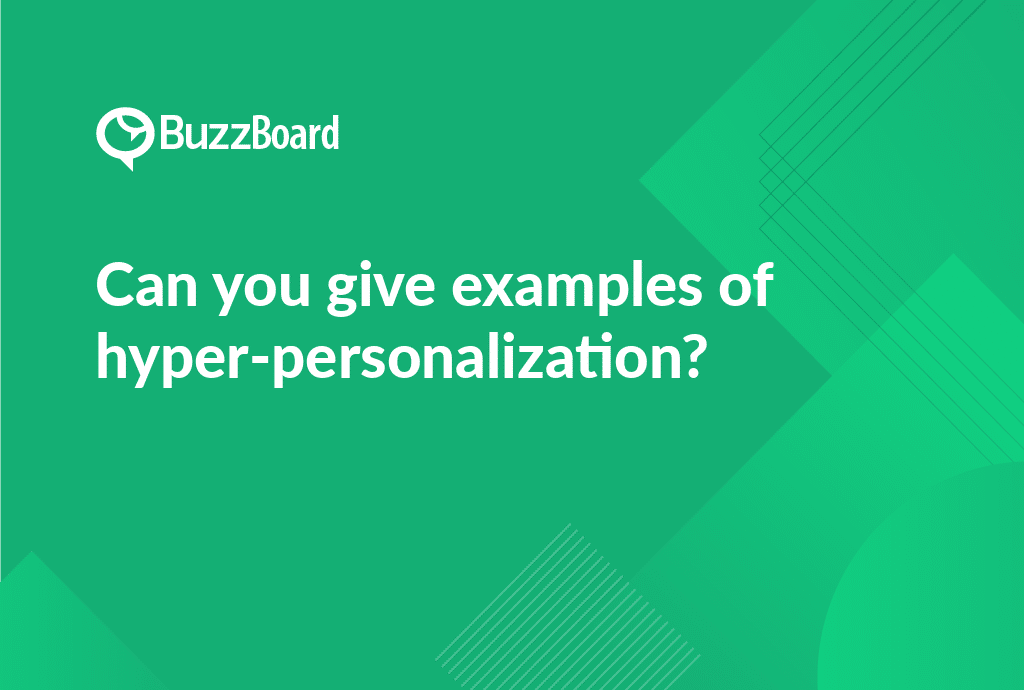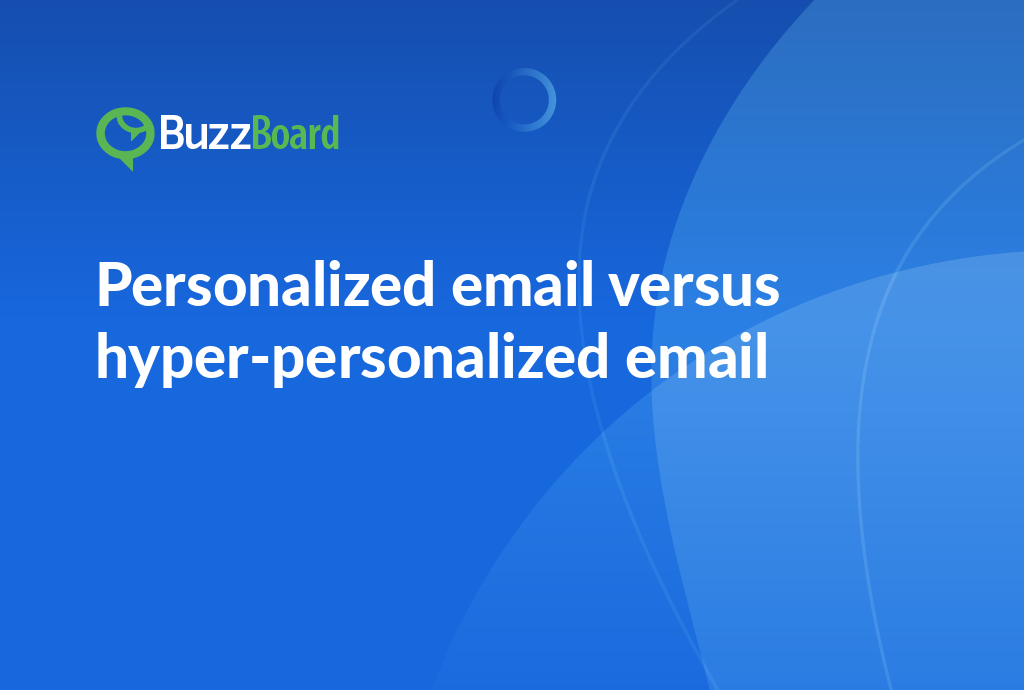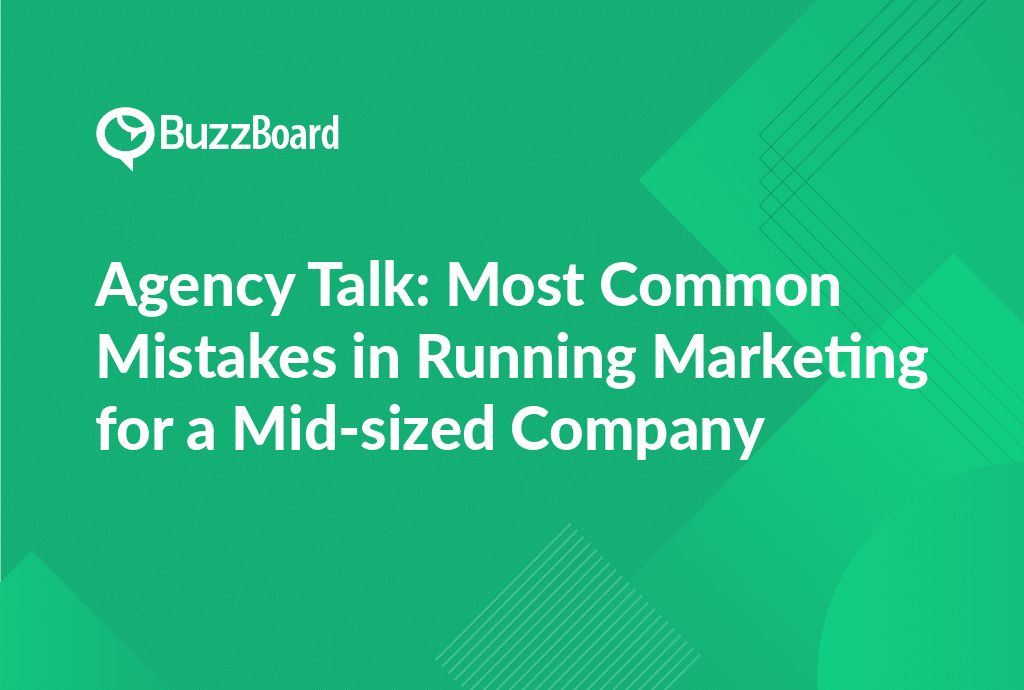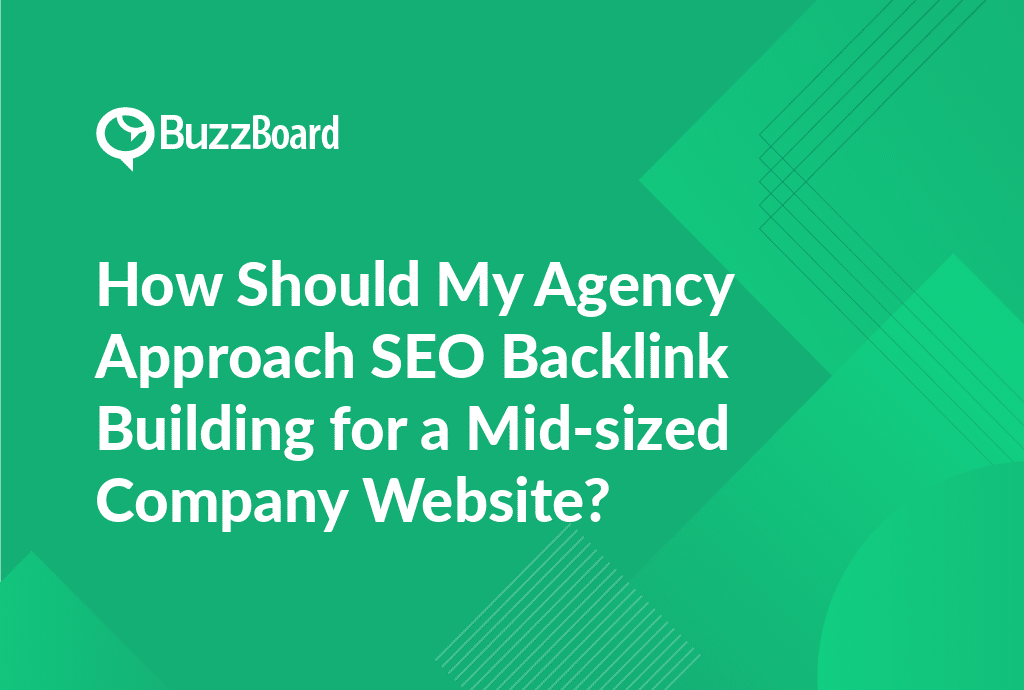Hyper-personalization is a marketing strategy that uses data and technology to deliver highly tailored experiences to individual customers. Examples of hyper-personalization include:
- Dynamic product recommendations based on a customer’s browsing and purchase history
- Personalized email campaigns that use machine learning to adapt to a customer’s behavior and preferences
- Customized content recommendations on social media platforms
- Real-time offers and promotions that are triggered by a customer’s location, behavior, and preferences
- Chatbots that use natural language processing to understand a customer’s needs and provide personalized support
By leveraging data and technology, businesses can create highly personalized experiences that increase customer engagement, loyalty, and conversion rates.
Discussing the Impact of Hyper-personalization in the Sales Process Through Real-World Examples
Hyper-personalization in sales is a game-changer, transforming blanket messages into customized outreach efforts that resonate deeply with potential clients. This strategy relies on amassing large volumes of data to gain insights about customer behaviors, preferences, and needs, resulting in personalized marketing approaches that dramatically increase sales responsiveness.
Take Amazon, for instance. The leading e-commerce giant employs hyper-personalization to provide tailored recommendations based on a user’s browsing and purchase history. This highly personalized approach has secured not only recurring sales for Amazon but also unbeatable customer loyalty.
Standing out in a crowded market requires a tailored approach to sales. One effective strategy is hyper-personalization, which involves crafting customized digital marketing strategies for each client based on their unique characteristics, needs, and goals. By applying this approach to selling digital services, a digital marketing agency targeting local restaurants can create a competitive edge and drive remarkable sales results.
For instance, a digital marketing agency serving local restaurants could utilize hyper-personalization to develop bespoke digital marketing strategies for each establishment. This might involve considering factors such as the restaurant’s location, specialty cuisine, target audience, and more. By taking the time to understand each restaurant’s distinct needs and goals, the agency can create a tailored sales approach that resonates with each client.
This hyper-personalized approach can have a profound impact on the sales process. By aligning the pitch with the client’s specific needs, the agency can stimulate increased interest and higher conversion rates. In other words, the agency is speaking directly to the client’s pain points and demonstrating a deep understanding of their business.
Incorporating hyper-personalization into your sales program can also help your digital marketing agency stand out amidst stiff competition. In a crowded market, it’s easy for clients to get lost in the noise. By taking the time to understand each client’s unique needs and goals, the agency can differentiate itself from competitors and establish a reputation for delivering results.
Moreover, hyper-personalization can foster lasting customer relationships. When clients feel understood and valued, they are more likely to become loyal customers and advocates for the agency. This can lead to a steady stream of referrals and repeat business, as well as positive word-of-mouth marketing.
To harness the potential of hyper-personalization, it’s essential to remember that the cornerstone of successful sales is understanding, engaging, and delivering solutions that mirror the client’s unique character. This requires a deep understanding of each client’s business, goals, and challenges, as well as the ability to communicate effectively and build trust.
By embracing hyper-personalization and incorporating it into your sales program, you can unlock the potential for customer acquisition, retention, and conversion. Whether you’re a digital marketing agency serving local restaurants or any other industry, the benefits of hyper-personalization are undeniable. By taking the time to understand each client’s unique needs and goals, you can establish a competitive edge, drive remarkable sales results, and build lasting customer relationships.
Exploring the Influence of Hyper-Personalization in Selling Digital Services With Specific Examples
The digital landscape is rapidly evolving, and businesses that fail to adapt to the changing consumer behavior will be left behind. The era of hyper-personalization is upon us, where consumers are bombarded with advertisements and service offers within seconds. In this fast-paced environment, businesses that can effectively personalize their outreach have a significant opportunity to capture potential customers and drive growth.
A compelling example of hyper-personalization is Netflix’s recommendation system, which uses sophisticated algorithms to interpret user viewing patterns and provides a highly personalized viewing list. This level of customization has revolutionized the way consumers interact with content, and it’s essential for sales representatives marketing digital services to small, local businesses to consider how these principles can be applied.
The concept of hyper-personalization is straightforward: understand your prospect’s challenges, whether it’s increasing their website’s visibility, boosting social media engagement, or enhancing SEO. Present a solution tailored precisely to their needs, and you’ll be more likely to capture their attention and drive sales engagement. This custom approach can considerably boost sales engagement and conversion rates, as it demonstrates a deep understanding of the prospect’s pain points and provides a solution that addresses their specific needs.
Take a local cafe, for instance. They may want to connect with local coffee enthusiasts on social media, but they may not know where to start or how to effectively target their audience. If you can offer a highly customized digital marketing solution, demonstrating how it can attract their specific clientele, they’d be more inclined to partner with your agency. By providing a tailored solution, you’re showing the cafe that you understand their unique challenges and are committed to helping them achieve their goals.
Another impactful example of hyper-personalization is Spotify, which constantly adjusts its song recommendations based on listener behavior. Similarly, you can modify your service offering based on the feedback or observed needs of the small business. By gathering insights from your prospects and tailoring your solution to their specific needs, you can create a more effective and engaging sales experience.
Hyper-personalization in sales is no longer just a preference but a requisite. It’s now time for sales representatives to integrate the magic of hyper-personalization into our selling methods of digital services and promote growth for small, local businesses. By adopting this approach, you’ll be able to differentiate yourself from competitors, build stronger relationships with your prospects, and drive long-term growth and success.
Hyper-personalization is the key to unlocking success in the digital marketplace. By understanding your prospect’s challenges, providing tailored solutions, and continuously adapting to their needs, you’ll be able to create a more effective and engaging sales experience. As sales representatives marketing digital services to small, local businesses, it’s essential to prioritize hyper-personalization and make it a core part of your sales strategy. By doing so, you’ll be well-positioned to capture potential customers, drive growth, and achieve long-term success.
Analyzing the Role of Hyper-personalization in Sales Engagement, Providing Practical Examples
The role of hyper-personalization in sales engagement is a crucial aspect of digital marketing agencies, particularly when selling digital services to small and local businesses. As a sales representative, you’re likely well-versed in the importance of personalized outreach for significant engagement. However, hyper-personalization takes personalization to the next level by leveraging real-time behavioral data and sophisticated algorithms to deliver content that is highly relevant to consumers, thereby boosting sales engagement.
In today’s digital landscape, hyper-personalization is no longer a luxury, but a necessity for businesses looking to stand out from the competition and drive meaningful connections with their target audience. By capitalizing on the power of hyper-personalization, digital marketing agencies can create tailored outreach strategies that resonate with small and local businesses, ultimately driving conversions and customer loyalty.
Let’s take a closer look at some practical examples of how hyper-personalization can be applied in various sales engagement channels.
Email Marketing: Hyper-personalization can significantly escalate open rates and conversion rates by sending targeted emails that are tailored to a lead’s past behavior and current interests. For instance, a basic approach might involve using a recipient’s first name, while a more complex strategy might involve tweaking offer details based on browsing history or prior purchases. By doing so, businesses can create a sense of familiarity and relevance, increasing the likelihood of engagement.
Website Experience: Hyper-personalization can also be applied to enhance user experiences on websites. By analyzing visitor behavior, businesses can customize website layouts and contents, thereby enhancing engagement and conversions. This can be achieved through the use of dynamic content, where the content displayed on a website changes based on the visitor’s behavior, interests, or demographics.
Social Media: Hyper-personalization can also facilitate targeted ad campaigns on social media platforms. By refining the target group based on interests, location, or engagement with earlier posts, businesses can create customized messages that connect profoundly with their audience. This can be achieved through the use of social media listening tools, which allow businesses to monitor and analyze conversations about their brand, competitors, and industry-related topics.
The era of a one-size-fits-all approach to selling digital services is over. Hyper-personalization is a key component of tailored outreach, and digital marketing representatives can enhance their conversion ability and customer loyalty by leveraging this powerful strategy. By capitalizing on the power of hyper-personalization, businesses can create meaningful connections with their target audience, drive conversions, and build long-term relationships.
Hyper-personalization is a game-changer for digital marketing agencies looking to drive sales engagement and customer loyalty. By leveraging real-time behavioral data and sophisticated algorithms, businesses can create tailored outreach strategies that resonate with small and local businesses, ultimately driving conversions and customer loyalty. As a sales representative, it’s essential to understand the power of hyper-personalization and how it can be applied in various sales engagement channels to drive meaningful connections with your target audience.
Examining How to Improve Customized Outreach Through Examples of Hyper-personalization
Traditional outreach methods are becoming increasingly ineffective, forcing digital marketing agencies to adapt and innovate. One such approach is hyper-personalization, which goes beyond simply addressing customers by their first name to truly understanding their unique needs, preferences, and pain points. This bespoke approach enables agencies to offer tailored digital services that resonate with their target audience, ultimately driving engagement and conversions.
One effective way to achieve hyper-personalization is through custom social media ads that are carefully crafted to speak directly to a potential client’s business niche. For instance, if your client runs a coffee shop, a tailored ad showcasing how your services can enhance their unique blend, increase customer loyalty, or drive sales might be a successful tactic. By highlighting the specific benefits your services can bring to their business, you can demonstrate your understanding of their needs and establish a connection with them.
Monitoring customer behavior is another crucial element of hyper-personalization. By analyzing data such as click-through rates, time spent on site, and product preferences, you can gain invaluable insights into your target audience’s behavior and preferences. This information can be used to refine your custom outreach, ensuring that your messages are more relevant and effective. For example, if you notice that a particular segment of your audience is more likely to engage with your content during certain hours of the day, you can adjust your messaging and timing to maximize your impact.
In addition to social media ads and behavior monitoring, other tactics can be used to achieve hyper-personalization. For instance, you can use email marketing campaigns that are tailored to specific segments of your audience, or create targeted content that speaks directly to the needs and concerns of your target audience. By leveraging these tactics, you can create a comprehensive and personalized approach that resonates with your target audience and sets your agency apart from the competition.
In an industry as competitive as digital marketing, standing out through tailored solutions can make a significant impact on your agency’s success. By investing time and resources in researching prospects and understanding their unique needs, you can increase the odds of selling digital services and build strong, lasting relationships with your clients. Remember, the time and effort you put into understanding your prospects is not wasted – it’s an investment in your agency’s future success.
Hyper-personalization is a powerful approach that can help digital marketing agencies stand out in a crowded market and drive real results for their clients. By leveraging custom social media ads, monitoring customer behavior, and using targeted tactics, you can create a comprehensive and personalized approach that resonates with your target audience and sets your agency apart from the competition.
Decoding the Benefits of Using Hyper-Personalization With Thorough Examples Across Different Areas of Digital Marketing
Hyper-personalization has emerged as a crucial component, particularly in selling digital services to local and small businesses. This approach has the potential to significantly boost sales engagement, offering numerous benefits to both providers and consumers.
Hyper-personalization is not limited to simply addressing the client by their name during sales interactions. Instead, it leverages the power of artificial intelligence (AI) and real-time data to deliver highly relevant, contextual messages that invigorate bespoke outreach endeavors. This personalized approach enables businesses to build stronger relationships with their customers, fostering a deeper understanding of their needs, preferences, and behaviors.
One of the most effective ways to implement hyper-personalization is through email marketing. Brands that incorporate this approach don’t simply include the customer’s name as a formal greeting; they develop content that is influenced by the customer’s past engagement with the brand, recent purchases, browsing actions, and more. This personalized content results in emails that have greater relevance, resonate more deeply with the recipient, and consequently yield increased engagement indices. For instance, a fashion brand might send a customer an email featuring a personalized selection of products based on their previous purchases and browsing history.
Hyper-personalization also dominates in social media advertising. By exploiting AI, these platforms scrutinize user data to present highly pertinent ads that converge with the user’s interests, actions, and behaviors. This personalized approach cultivates profound relationships, resulting in inflated click-through rates (CTR) and conversions. For example, a travel company might use AI-powered social media advertising to target users who have shown interest in a specific destination or type of vacation, serving them personalized ads that highlight relevant deals and packages.
On-site product recommendations can also capitalize on hyper-personalization. By analyzing a visitor’s browsing history, a website can suggest items that the visitor is potentially interested in purchasing. Amazon is a leading exemplar of this strategy, attributing 35% of its revenue to such recommendations. This approach not only enhances the customer experience but also increases the likelihood of conversion.
In addition to these examples, hyper-personalization can be applied to various other digital marketing channels, including search engine optimization (SEO), content marketing, and influencer marketing. By incorporating AI-powered tools and real-time data, businesses can deliver highly relevant and contextual content that resonates with their target audience.
It is essential to remember that if employed appropriately, hyper-personalization can tremendously elevate a brand’s relevance and stimulate sales. However, it is crucial to strike a balance between personalization and privacy, ensuring that customers feel comfortable with the level of personalization and that their data is being used responsibly.
To get the most out of hyper-personalization, businesses should continue exploring innovative methods to integrate this technique into their sales strategies. This may involve investing in AI-powered tools, developing data-driven marketing campaigns, and fostering a culture of experimentation and iteration. By doing so, businesses can stay ahead of the curve, build stronger relationships with their customers, and drive long-term growth and success.
Conclusion
In conclusion, hyper-personalization is a powerful marketing strategy that can help businesses build strong relationships with their customers and drive business growth. By leveraging data and technology, businesses can deliver highly tailored experiences that meet the unique needs and preferences of each individual customer.
As we’ve seen, hyper-personalization can take many forms, from dynamic product recommendations to personalized content and real-time offers. By understanding the different ways that hyper-personalization can be applied, businesses can start to develop their own strategies for delivering more personalized experiences to their customers.
Ultimately, the key to successful hyper-personalization is to use data and technology to create a deeper understanding of each customer’s needs and preferences. By doing so, businesses can build trust, increase engagement, and drive conversions. As the marketing landscape continues to evolve, hyper-personalization is likely to play an increasingly important role in helping businesses stay ahead of the competition and achieve their goals.
By embracing hyper-personalization, businesses can create a competitive advantage, drive growth, and build strong relationships with their customers. Whether you’re just starting to explore the possibilities of hyper-personalization or you’re looking to take your strategy to the next level, the possibilities are endless – and the potential rewards are well worth the effort.









